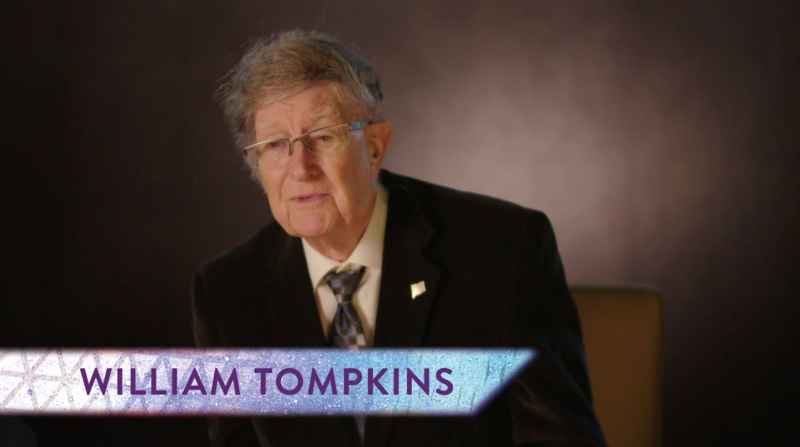
You need to understand that much described here has been confirmed through both alternate and independent sources. We get a far richer history of the Space Program as well and particularly the Vril are restored to the story line.
At the same time bill did not have what is called the big picture and somehow he got briefed regarding the purported confrontation on the Moon.
Central to everything is gravity control. The rocket tech was at its limit back in the sixties and having the Germans allowed hardware able to get to the moon and back. It was capable of nothing much else and that is the natural limit to this day. Further is simply reckless and will kill people.
However, as i have posted, the gravity tech was then been built out and the whole rocket meme was essentually dropped as it was obsolete but usuable for low orbit lifts and convincing potential enemies that this was the way forward.
We are obviously in communication with off worlders to insure we do not step on toes.
SECRETS OF THE APOLLO MISSIONS WITH WILLIAM TOMPKINS
Season 7, Episode 14
04 Apr 2017
Freemasons, WernherVonBraun, Apollo, DrDebus, ICC, RedstoneArsenal 25,124
David Wilcock: All right, welcome back to “Cosmic Disclosure”. I'm your host, David Wilcock. I'm here with Corey Goode.
So what we're going to start out with here is a segment in which [William] Tompkins is exploring the very contentious Freemason connection to all of this. Let's take a look.
* * * * * *THE FREEMASON CONNECTION
William Tompkins: If you take me working in the secret think tank at Douglas, okay, the only two people that'd know that's even there at Douglas is the Vice President of Engineering and Dr. Klemperer.

When we had meetings with Navy admirals there on the programs, or when we had meetings of other top officials, or when we were doing design review meetings of our own people, because we had a lot of people in that group, the subject would get to a point where there was no answer.
And then I would come up with an answer.
The Vice President of Engineering would always throw this in. He said, “Bill, you approach everything,” meaning this subject and other stuff, “you look at it as if you're not from here at all.”
I've had that stated to me hundreds of times by different people.
All I can say is, my dad was a 33-level Freemason. Okay? My uncle Harding was Chief Surgeon, Santa Monica Hospital – a lot of money, big house, spent every cent that he had digging through the insides of the pyramids trying to decipher the hieroglyphics. That's what he's trying to do. [He] has three daughters, my aunts.
Season 7, Episode 14
04 Apr 2017
Freemasons, WernherVonBraun, Apollo, DrDebus, ICC, RedstoneArsenal 25,124
David Wilcock: All right, welcome back to “Cosmic Disclosure”. I'm your host, David Wilcock. I'm here with Corey Goode.
So what we're going to start out with here is a segment in which [William] Tompkins is exploring the very contentious Freemason connection to all of this. Let's take a look.
* * * * * *THE FREEMASON CONNECTION
William Tompkins: If you take me working in the secret think tank at Douglas, okay, the only two people that'd know that's even there at Douglas is the Vice President of Engineering and Dr. Klemperer.

When we had meetings with Navy admirals there on the programs, or when we had meetings of other top officials, or when we were doing design review meetings of our own people, because we had a lot of people in that group, the subject would get to a point where there was no answer.
And then I would come up with an answer.
The Vice President of Engineering would always throw this in. He said, “Bill, you approach everything,” meaning this subject and other stuff, “you look at it as if you're not from here at all.”
I've had that stated to me hundreds of times by different people.
All I can say is, my dad was a 33-level Freemason. Okay? My uncle Harding was Chief Surgeon, Santa Monica Hospital – a lot of money, big house, spent every cent that he had digging through the insides of the pyramids trying to decipher the hieroglyphics. That's what he's trying to do. [He] has three daughters, my aunts.
We lived in that house for almost a year. And what are we doing?
There is a chair that he has next to the fireplace in that house. The chair is almost five-feet wide, wood chair, all covered with hieroglyphics.
And some people said that it was King Tut's chair. Well, that's a good thing to call it, but yeah, it came from one of the kings.
I don't know how he smuggled it out of the country, but he smuggled a whole lot of stuff out of that country. And he disseminated it to top research people in the United States.
So once again, who was Uncle Harding? A 33-level Freemason, okay?
And all I'm saying is there's a whole lot of stuff that we're not involved in, we don't understand.
* * * * * *
David: So, Corey, the first thing that he said is that everybody there acted as if he wasn't from here. These answers that he would come up with for seemingly ponderous questions no one could answer were suggesting, it appears from what he's saying, and if you read his book, that he had some sort of telepathic knowledge or some sort of deeper wisdom.
So regarding this concept of extraterrestrial lineage or extraterrestrial consciousness, is that possible, and do you think that that could be what's going on with Tompkins?
Corey Goode: It could be a number of things. It could be that he incarnated here from another extraterrestrial soul group, possibly these Nordics that he's talking about.
David: Uh hm.
Corey: Or he is in conscious and unconscious telepathic communication with them.
David: Which he does describe in his book . . .
Corey: Right.
David: . . . conscious communication with Nordics.
Corey: And I've experienced that myself.
David: So when he described this question of Uncle Harding being a 33rd degree Mason and also the head of the Santa Monica Hospital, taking all of his excess money and plundering out artifacts from the pyramids, some people might find that hard to believe.
They would think that there's very tight government regulations on those artifacts and where they go.
Is that not true?
Corey: Not back then.
David: Okay.
Corey: Not back then.
David: Okay.
[ regulations are simply a bribe law - arclein ]
Corey: It was very common for people to “do archaeology”. They called it archaeology, but it was basically just tearing up archaeological sites, looting it for trinkets that they would sell or take home to sell to a museum.
David: So you think that there actually could be artifacts as amazing as a five-foot wide chair covered with hieroglyphics just sitting in somebody's house?
Corey: Oh, absolutely, yes. There are large private collections of very important artifacts.
David: Why do you think Freemasons would be interested in this stuff?
Corey: As you know, or many may not know, everyone, in order to be involved in the civilian space program, were required to be Masons.
Masons are “keepers of knowledge”, and if they're getting these ancient wisdom teachings through their various teachings and all these things they have to memorize, what they have to memorize is just crazy.
If you've proven yourself that you're able to keep these tenets and secrets, then you're trusted with many more.
David: Right.
Corey: And you're already a part of an organization that is being managed.
David: And in case somebody doesn't know, what are the penalties for spilling Masonic secrets if you become an initiate?
Corey: Death.
David: Yeah, so it's a very intense rite of passage to be able to get somebody's confidentiality and a sense that you can trust them with secrecy.
Corey: They take it very seriously.
David: So why do you think he mentioned his father and this uncle being 33rd degree Masons when he discussed the idea that he might be an extraterrestrial soul?
Corey: A lot of these societies trace back their lineage to nonterrestrials that came to this planet thousands of years ago. And that, too, is very important to them, being able to trace this lineage.
While tracing the lineage, they're also tracing the history of the lineage. And all of this information, well, some of this information is going to be available to certain Masons.
And apparently his uncle had heard enough of this information that he felt compelled to spend his own fortune to try to answer some of the questions for himself.
David: All right, now in this next segment, what we're going to have for you is a further discussion of Freemasonry as it applies to something very interesting that you might not have thought of before.
Corey: It was very common for people to “do archaeology”. They called it archaeology, but it was basically just tearing up archaeological sites, looting it for trinkets that they would sell or take home to sell to a museum.
David: So you think that there actually could be artifacts as amazing as a five-foot wide chair covered with hieroglyphics just sitting in somebody's house?
Corey: Oh, absolutely, yes. There are large private collections of very important artifacts.
David: Why do you think Freemasons would be interested in this stuff?
Corey: As you know, or many may not know, everyone, in order to be involved in the civilian space program, were required to be Masons.
Masons are “keepers of knowledge”, and if they're getting these ancient wisdom teachings through their various teachings and all these things they have to memorize, what they have to memorize is just crazy.
If you've proven yourself that you're able to keep these tenets and secrets, then you're trusted with many more.
David: Right.
Corey: And you're already a part of an organization that is being managed.
David: And in case somebody doesn't know, what are the penalties for spilling Masonic secrets if you become an initiate?
Corey: Death.
David: Yeah, so it's a very intense rite of passage to be able to get somebody's confidentiality and a sense that you can trust them with secrecy.
Corey: They take it very seriously.
David: So why do you think he mentioned his father and this uncle being 33rd degree Masons when he discussed the idea that he might be an extraterrestrial soul?
Corey: A lot of these societies trace back their lineage to nonterrestrials that came to this planet thousands of years ago. And that, too, is very important to them, being able to trace this lineage.
While tracing the lineage, they're also tracing the history of the lineage. And all of this information, well, some of this information is going to be available to certain Masons.
And apparently his uncle had heard enough of this information that he felt compelled to spend his own fortune to try to answer some of the questions for himself.
David: All right, now in this next segment, what we're going to have for you is a further discussion of Freemasonry as it applies to something very interesting that you might not have thought of before.
Let's take a look.
* * * * * *REWRITING THE APOLLO MISSION
* * * * * *REWRITING THE APOLLO MISSION
William Tompkins: So now I am Engineering Section Chief at Douglas on the Apollo program, and I had 173 engineers and designers and scientists, actually 11 PhDs.
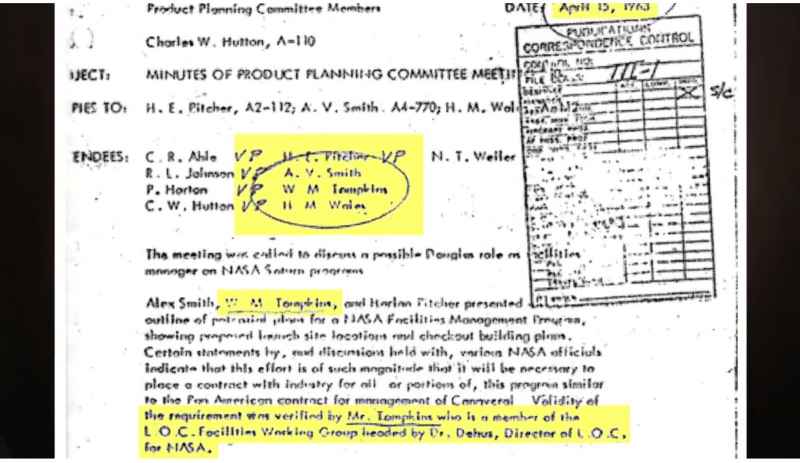
And I make the suggestion. These guys take it and run with it. Okay? Best group of engineers on the planet, top guys.
And we put together a whole new NASA program for the Moon. Threw out everything that NASA had done, came up with a whole new one. Okay?
I submit it to the heads of engineering. They submit it to marketing, and marketing talks to the manufacturing people, and they try to fire me. Okay? Because manufacturing wants to manufacture. They don't want to do this engineering stuff at all. Okay?
I don't get fired. I get authorized to go ahead and do this. But marketing, . . . they wouldn't do it. So the Vice President of Engineering said, “Secretly, we're going to do this ourselves.”
So I put the stuff together. I have a six-foot by six-foot model of the new NASA mission command center – looks just like a big theater with step-down seating, screens on the wall.
And we put together a whole new NASA program for the Moon. Threw out everything that NASA had done, came up with a whole new one. Okay?
I submit it to the heads of engineering. They submit it to marketing, and marketing talks to the manufacturing people, and they try to fire me. Okay? Because manufacturing wants to manufacture. They don't want to do this engineering stuff at all. Okay?
I don't get fired. I get authorized to go ahead and do this. But marketing, . . . they wouldn't do it. So the Vice President of Engineering said, “Secretly, we're going to do this ourselves.”
So I put the stuff together. I have a six-foot by six-foot model of the new NASA mission command center – looks just like a big theater with step-down seating, screens on the wall.
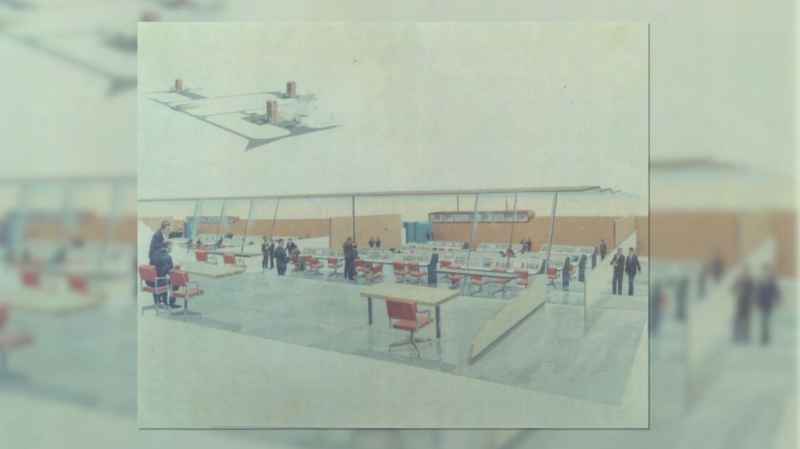
So I put it on to a brand-new DC-7 and all my documentation, and I fly down to the secret Redstone Arsenal, secret space station, where all the Germans and where NASA is.
And I rent a truck. And I'm in a three-piece business suit. I rent this truck, and it's got all these gears that I've never run.
And I drive this thing with a box in it into this secret area. Okay?
But what's interesting is that my secretary writes me a letter which will get me to the top man in Redstone Arsenal, but she tells me I'm not going to need it. [ she is vril ]
And as I'm driving up, she tells me telepathically, “Don't worry, Billy, the gates are going to open.”
So I'm driving in, and these great big gates open, and I drive right on in, past an enormous area on the side with dozens and dozens of trucks and cars and automobiles and equipment, where everybody has to go through security to check everything you've got in that truck, get permission to take it in, and all that stuff.
So I drive right through the gate. The gate opens.
I drive in that thing and start looking for von Braun's office myself. I go through the traffic of the base. Okay.
I get to the base, finally the tower. The four security guards of the building come down. They put their rifles next to the building door.
They're coming down the stairway with a great big enormous dolly. This dolly has four wheels. They all carry it down the steps. They roll it over to my truck. They take the bars and the side bars, wooden bars, off the side of the truck. They take my model and move it over to a dolly.
Where did the dolly come from? Why was the dolly there?
They push the model in on the big dolly, back into a bunch of offices, down a hallway. The elevator door – quite large door, elevator – opens up with three other elevators on the side of the center one.
The doors open up. They push this in.
I walk in with my satchel full of my data. We go up to the top floor. The doors open.
They, not saying a word, push this dolly into the lobby area. Those doors opened up.
We went into the first big office area with all of von Braun's people on this side and Dr. Debus people on that side.
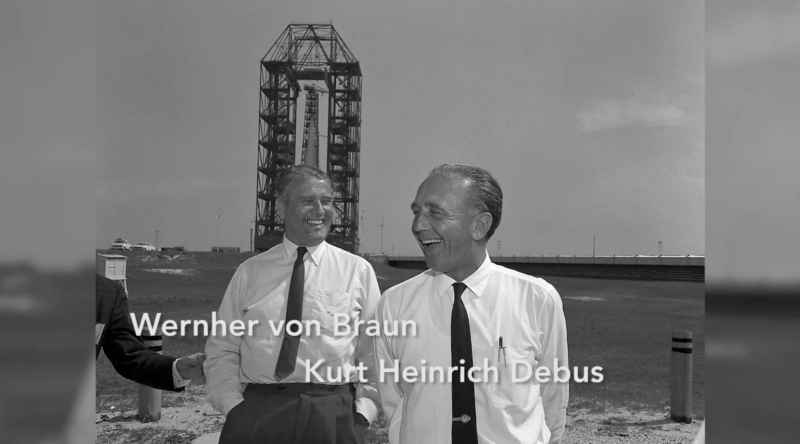
The doors into this great big conference room open up. They park the dolly. They open up the box.
They pick this model up that's got . . . it's covered with this soft blue cloth. They set it on the blue cloth in the conference room.
Dr. Debus' secretary and Dr. von Braun's secretary come over to me.
The four guards take this dolly. They roll it back out. They click their heels, and they salute, and it goes downstairs.[ that must have felt wierd ]
Now, remember, I haven't said a word to anybody. I came on board this facility without any piece of paper. I've come in. I haven't talked to anybody. And both of them already know that I'm here now.
So Debus' secretary said that Dr. Debus will be here in just a moment, and Dr. von Braun will be here too.
Debus came out of his conference room, and he introduced himself to me. And von Braun came out of the other conference room, and he introduced himself to me too.
So now they've got this great big blue thing in the middle of their shiny conference room table.
I said, “I'm William Tompkins. I come from Douglas, and I have a proposal that we'd like to present to you on some changes we feel are necessary for the Apollo to get to the Moon.”
Nobody stops me. Several of von Braun's people come in and sit behind him on his table. Debus' people sit with him. Both of the secretaries sit down, and I start talking.
And at the right point, I pull this cloth off, and I show them what you and everybody else on the planet has seen, which is Complex 39's launch control system, where you've seen Dr. von Braun sitting up at the top and all the engineers and everybody watching the stuff on the screen.
I walk in with my satchel full of my data. We go up to the top floor. The doors open.
They, not saying a word, push this dolly into the lobby area. Those doors opened up.
We went into the first big office area with all of von Braun's people on this side and Dr. Debus people on that side.

The doors into this great big conference room open up. They park the dolly. They open up the box.
They pick this model up that's got . . . it's covered with this soft blue cloth. They set it on the blue cloth in the conference room.
Dr. Debus' secretary and Dr. von Braun's secretary come over to me.
The four guards take this dolly. They roll it back out. They click their heels, and they salute, and it goes downstairs.[ that must have felt wierd ]
Now, remember, I haven't said a word to anybody. I came on board this facility without any piece of paper. I've come in. I haven't talked to anybody. And both of them already know that I'm here now.
So Debus' secretary said that Dr. Debus will be here in just a moment, and Dr. von Braun will be here too.
Debus came out of his conference room, and he introduced himself to me. And von Braun came out of the other conference room, and he introduced himself to me too.
So now they've got this great big blue thing in the middle of their shiny conference room table.
I said, “I'm William Tompkins. I come from Douglas, and I have a proposal that we'd like to present to you on some changes we feel are necessary for the Apollo to get to the Moon.”
Nobody stops me. Several of von Braun's people come in and sit behind him on his table. Debus' people sit with him. Both of the secretaries sit down, and I start talking.
And at the right point, I pull this cloth off, and I show them what you and everybody else on the planet has seen, which is Complex 39's launch control system, where you've seen Dr. von Braun sitting up at the top and all the engineers and everybody watching the stuff on the screen.
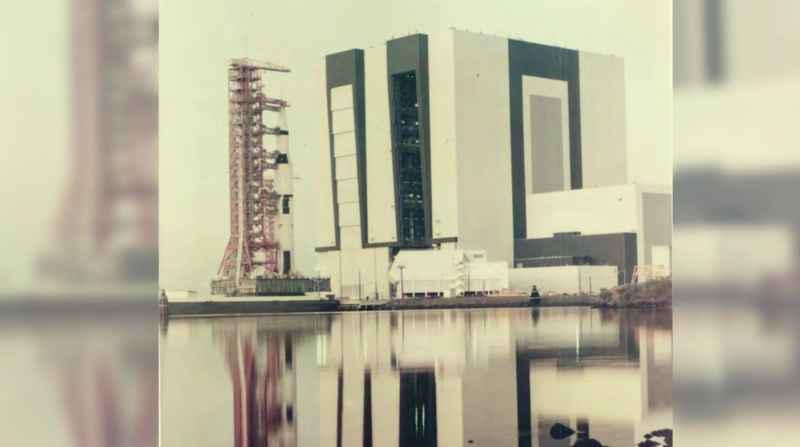
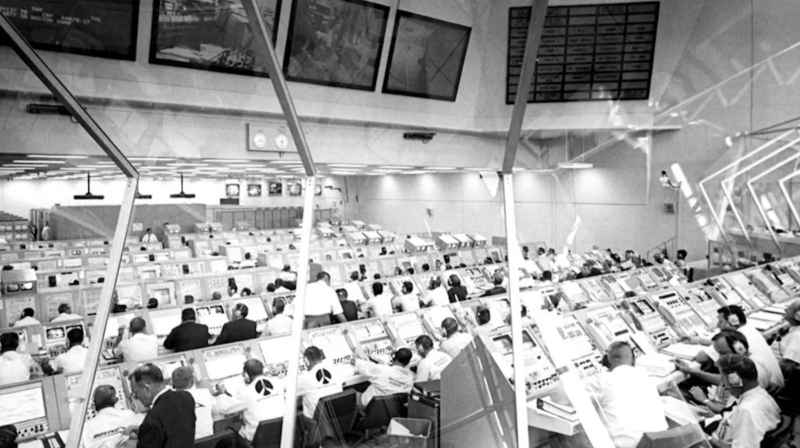
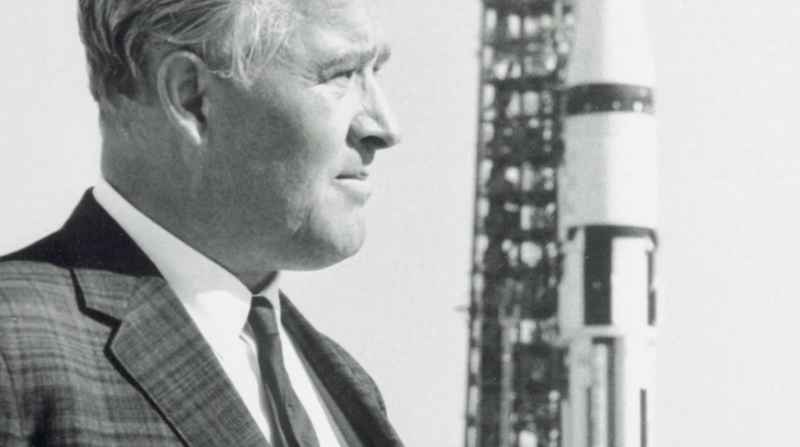
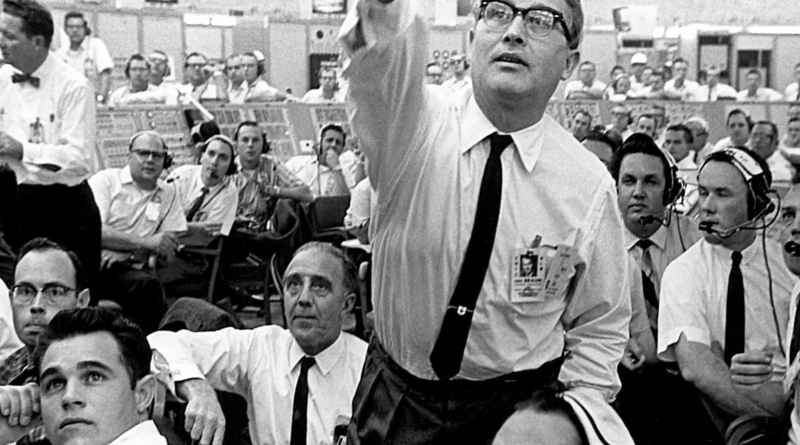
So I have a model of this, and what took place was they both heard my pitch. It took me about 40 minutes on the pitch, and von Braun shook my hand and said, “We need to get together.”
And Debus shook my hand, put his arms around me, and he took me to every top guy in NASA there, introduced me as some sort of genius.
* * * * * *
David: So once again here, what we are seeing is an extremely valuable historical document showing us how one of the most highly regarded and beloved images associated with the Apollo missions and our trips to the Moon, what he's calling Complex 39, what most people would just think of as Mission Control, was actually something that he himself designed, going against the will of the manufacturing crew, who just wanted to manufacture.
So why do you think he said that he would get such a backlash and that manufacturing just wants to manufacture?
Like what were you hearing when he's describing this ping pong juxtaposition between engineering and manufacturing?
Corey: A lot of these engineers, they don't like to be pulled off of what they were doing or working on for a long period of time and be put on a special project. A lot of them will resent it.
They are now reporting to people that they didn't report to out of their core group. They would just rather have things status quo. And that's the way engineers are.
You don't want to shake things up with them too much, or it will affect their work.
David: So the people that were in what he's calling “manufacturing” were engineers, but they were specialists in a particular category.
Corey: Right, you'll have engineers, and then you have technicians, who are basically engineers and just as smart as the engineers that are actually putting into practice what the engineers have designed.
David: Is it possible that there are certain cases in a highly secure military facility where somebody would get clearance to be able to bypass the normal security checkpoints as he's describing?
Corey: In very rare circumstances. Back in the '40s, similar things happened with the delivery of the nuclear . . . of transport of the nuclear weapons.
They would go in through a side gate or right through the front gate. The sentries would be told ahead of time, “This vehicle's coming at approximately this time. Wave them through.”
David: Now, last time we saw a segment in which he was describing the actual development of the German V-2 rockets. I mean, he didn't call them that at the time, but that there was a nuclear-type of capability is what he was implying that they were working on that, and that those missiles were then directly implemented into the development of the Apollo program, that same German technology – von Braun, of course, being German.
Corey: Right. These aren't the V-2s. These were actual multistage ICBMs that they were already developing . . .
David: Oh, really?
Corey: . . . on the board developing at the time. So von Braun came in with that knowledge. So making multiple-stage rockets was something that he already had put a lot of time and effort into engineering.
David: All right, so the next segment that we have for you is another very interesting one in which this really amazing man is describing that there was a lot more going on with the Apollo missions than just landing on a dead old dry piece of rocks with nothing to see. Let's take a look.
* * * * * *
ONE SMALL STEP
William Tompkins: First phase was to get up there, pick up the rocks, take the pictures and get back, okay?
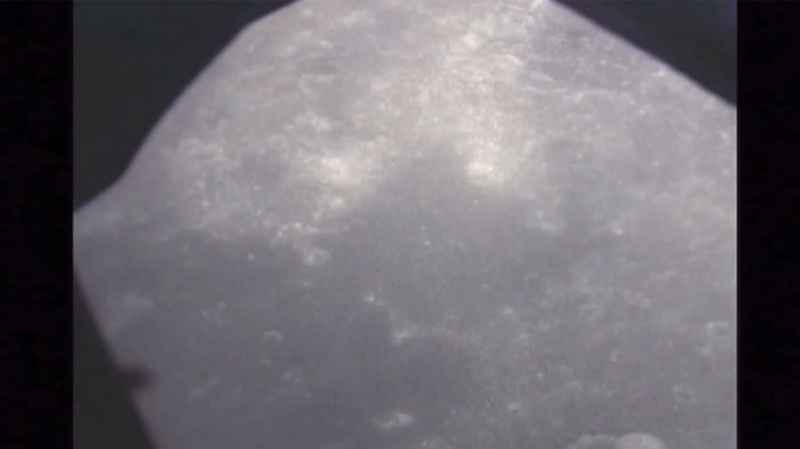
So we get there. We got all these vehicles all around the rim, and one of those nearly push us out of orbit to even get in there halfway to the Moon. It came right up next to us. Okay?
And so the public didn't hear the conversation, “The damn thing's almost going to hit us!”
Communication, Mission Control, right out of the vehicle. And so you get there, but you've spun around several times. You've taken all your pictures of all the stuff that's already there. You know where you want to be.
And then, as you make your first run, here's all these vehicles coming in – great big massive things.
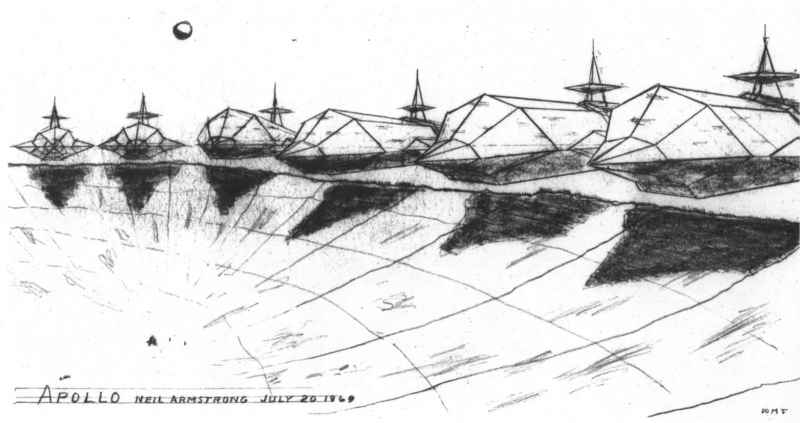
And they go park around the rim of where you got to land! Holy cats!
So you land. You do your . . . We have to do our thing.
And then the guy says, “Okay, go ahead and pick up some more rocks. And I know you have a problem, so do two or three of your additional missions, and don't come back. Period.”
* * * * * *
David: So what do you think was going on there? I mean, Tompkins is presenting it from the eyewitness perspective. What's the insider perspective on this story that we just heard here?
Corey: The Apollo crew landed in an area that was sensitive to the Reptilians. They came out and surrounded the rim of the . . .
David: “They” the Reptilians came out?
Corey: The Reptilians came out in a number of large ships to intimidate.
David: I see.
Corey: And when the astronauts gathered the rocks, did a few of their experiments, and then went to leave orbit, one of these vessels escorted them.
And so the public didn't hear the conversation, “The damn thing's almost going to hit us!”
Communication, Mission Control, right out of the vehicle. And so you get there, but you've spun around several times. You've taken all your pictures of all the stuff that's already there. You know where you want to be.
And then, as you make your first run, here's all these vehicles coming in – great big massive things.

And they go park around the rim of where you got to land! Holy cats!
So you land. You do your . . . We have to do our thing.
And then the guy says, “Okay, go ahead and pick up some more rocks. And I know you have a problem, so do two or three of your additional missions, and don't come back. Period.”
* * * * * *
David: So what do you think was going on there? I mean, Tompkins is presenting it from the eyewitness perspective. What's the insider perspective on this story that we just heard here?
Corey: The Apollo crew landed in an area that was sensitive to the Reptilians. They came out and surrounded the rim of the . . .
David: “They” the Reptilians came out?
Corey: The Reptilians came out in a number of large ships to intimidate.
David: I see.
Corey: And when the astronauts gathered the rocks, did a few of their experiments, and then went to leave orbit, one of these vessels escorted them.
David: So when Tompkins is saying, “The guy told us not to come back. Just get a few samples and go”, who do you think he means by “the guy”?
Is he talking about Mission Control, or is he talking about extraterrestrials, or what do you think he was driving at?
Corey: Apparently, one of these nonterrestrials, either a Reptilian or not, told them that they needed to leave and not come back. It could very well have been even a Nordic telling them, “Hey, you need to get out of there. Do what you need to do, and then don't come back.”
David: Some people watching this who are not more familiar with this type of disclosure could be experiencing what in psychology we'd call cognitive dissonance about the idea that something this big could have happened on the Apollo landing, where Neil Armstrong seemed pretty happy when he's saying “One small step for man. One giant leap for mankind.”
You know, we have film. We have photos of what's going on down there.
Corey: He probably was quite happy at that time. That was . . . And then later on, all of a sudden you've got these intimidating-looking craft that are ginormous surrounding the crater you're in.
That's probably going to change your tone a little bit.
David: A lot of skeptics would assume that this is completely ridiculous – the idea that, “Oh, well, of course, the astronauts would have talked. Of course, we would have known about this. Of course, they would have captured it on film, or somebody would have squealed, or something would have leaked out.”
How do you answer that?
Corey: That's what the blank slating process is for. I've heard many a story of astronauts that will have no memory of their mission, or very little memory of their missions.
So a lot of them, they're having their memories manipulated.
David: Bob Masters, who was the husband of Jean Houston, the famous female celebrity, actually tried to hypnotize Edgar Mitchell after his Moon missions and spent 40 hours trying to hypnotize Edgar Mitchell.
And Edgar Mitchell was never able to remember a single thing that happened to him when he was on the lunar surface.
Is that what might have happened to Edgar Mitchell?
Corey: It sounds like that might exactly be what happened to him.
David: Skeptics might say, “Come on, man, that there was live video feed coming in from the landing on the Moon.” How could these ships have not been seen?
Corey: You have at least a two-minute delay, and then you also have the medical channel that they would go to to discuss things that were not for the ears of the public.
David: So, in other words, if we have Germans who were brought over here to build NASA that have oaths of secrecy that they're keeping and maintaining, they would have designed this from the beginning knowing that there was going to be things they didn't want us to see and make absolutely sure that we only saw the version of reality that they wanted us to get. Would you agree with that?
Corey: I would agree.
David: All right, what we're going to see now in this next segment is another very interesting historical document suggesting that Tompkins may have had a pivotal role in the development of the very secret space program business model that Corey actually was involved with as a functional profit-making enterprise in our Solar System. Let's take a look.
* * * * * *
INTERPLANETARY CORPORATE CONGLOMERATE
William Tompkins: I get fired from Douglas for going to Apollo and von Braun and changing the program. I get fired on a Friday.
And Saturday night, my secretary calls me and tells me, “Okay, Billy, I've talked to Dr. Debus, and he wants you to talk to Dr. so-and-so at the corporate office of North American over at LAX.”
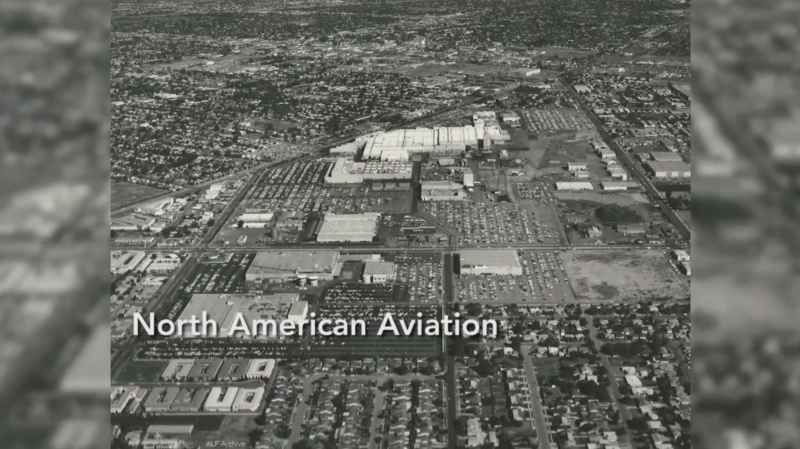
So I call Dr. Debus, and he has made arrangement for me to take a position in the corporate office of North American in advanced space programs, vehicles, and over propulsion system programs at Rocketdyne.
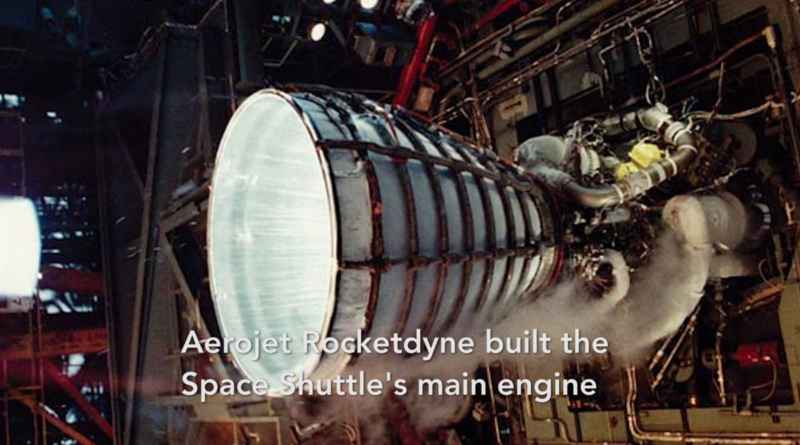
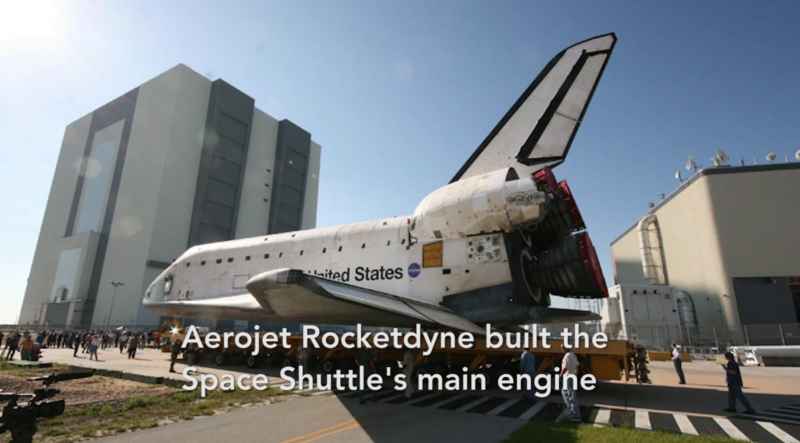
Anyway, they're the ones that build these great big space shuttles, and everybody see them. So now I'm an adviser to these guys. I bring my stuff with me, a lot of it, from Douglas to my offices in North American.
I put together a rough of a plan how to design and build commercial spaceships which could go out into the Solar System and set up facilities on local solar system planets to learn how to mine some particular mineral here on the planets as a learning program to go out into the galaxy as business and commercial and operate from another star's planet with large corporations, all private, nonmilitary, to not just go look for mining, but virtually any subject we can come up with – commercial, interface, commercial.
But they had far more important things to do, and so we didn't get involved . . . I didn't get involved with developing that. But other people took it over later on, and they implemented the program.
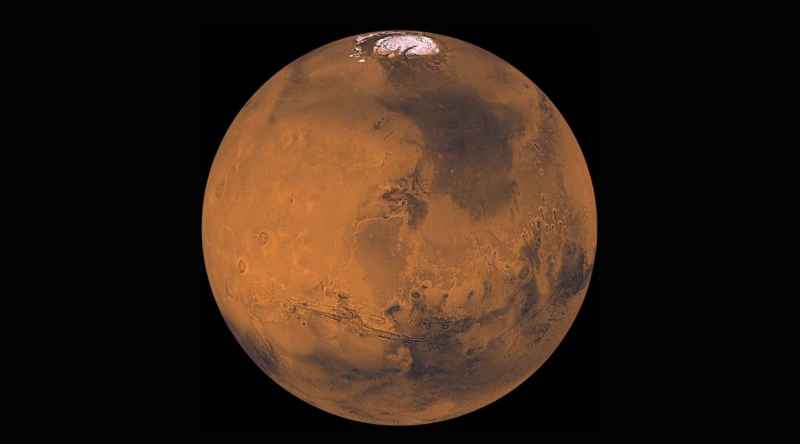
2003, they had their facilities run in two different locations, one on Mars and one on another planet off of the second star, closest star.
They're mining now. They're mining, and they're commercially operating – North American, a company here in Los Angeles, okay, still the same company as it was way back doing rocket engines and space shuttles and all this other stuff.
So they took that concept, used it, used it for commercial operations, which is what we wanted to do way back when we were trying to start this. Okay?
But they took the time. They brought the people in, and they did the commercial stuff, and they're doing it now. They're successfully operating.
What I'm trying to say is there's maybe as many as 25, 28 companies here on this planet that are operating commercial operations out in the galaxy.
* * * * * *
David: All right, so, Corey, what we're seeing here is really fascinating, the idea that Tompkins may have actually been the first person, at least in the West – we don't know about the German side – to have considered the possibility of using this not just as a Reptilian invasion force, but to develop a commercial mining industry and production industry out in space.
Corey: Well, yes, the Germans were already exploiting the military aspect of it to fly alongside the Draco. The U.S. Navy and parts of the U.S. government were developing a counterbalance of power against this German fleet that was being developed to fight alongside the Draco.
And basically, we were going to be doing the same thing with these Nordics, fighting alongside them, fighting the Draco. So that . . .
David: So do you think it's possible that his historic role could be confirmed by this, that perhaps up until the time that he had that idea, that no one had actually been thinking about this as a potential business that money could be earned from, or profit in some other form?
Corey: The moment they develop the technologies, they start various think tanks to come up with ways to exploit it for commercial and military purposes. So he was probably just one think tank.
David: And he described that there were 23 to 28 industries, I believe is what he said.
Corey: Companies.
David: Companies here on Earth that were all involved in this industrial manufacturing in our Solar System and outside our Solar System. How does that number jive with what you've heard?
Corey: It's much larger than that, but that could be probably the core companies that started what we are calling the Interplanetary Corporate Conglomerate. They could have been the first businesses to begin this program.
David: Another thing that I feel we need to cover here is he mentioned in 2003 that there was a mining facility on Mars and another one in one of the two closest stars to our solar system.
That is certainly a lot smaller than what we've talked about with you on the show before, so . . .
Corey: Yes, that is much smaller in scale compared to what we're actually doing out there. We're mining the Asteroid Belt. We're mining various planets for minerals, and we have a number of mining operations on Mars.
David: What's your knowledge of how many sites there are where commercial adaptations are taking place outside our Solar System?
Corey: There are a number of them. They're usually Draco-controlled worlds that they've allowed us mining rights, I guess you would say.
We've gone into other star systems in our local star cluster to look for minerals, and when we got there, we were turned away by the inhabitants.
David: Probably violently, I would assume.
Corey: Well, you know, we don't have a real good reputation running around with the Reptilians, around the cosmos, causing problems.
David: Right. All right, well this has been another fascinating glimpse through the pages of history.
William Tompkins, a true American hero, coming from the very highest levels of the World War II military-industrial complex secret space program apparatus in its origin.
And now we have the opportunity to connect the dots. And I hope that you're seeing, just like I am, how beautifully all of these threads line up, and that we are, in fact, talking about something that is true, and in time will become public knowledge and will dramatically transform every aspect of life on Earth and in our galaxy as we know it.
No comments:
Post a Comment